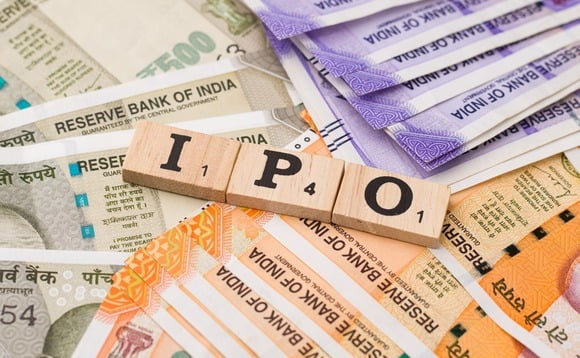Understanding The IPO Process in India

Understanding The IPO Process in India
About Initial Public Offerings
When a private firm wishes to go public, it sells shares through an IPO. It is a company’s first public stock offering to the public, institutional investors, and high-net-worth persons. An public offer market is crucial where companies seek long-term finance. It differs from the secondary market, where shares are traded among investors, and corporations can meet their short-term capital requirements.
In essence, an IPO is when a private company goes public and is listed on a stock exchange. The management of such companies is confident in their business strategy and expects the offer to attract retail and other strategic investors. They are made to face the regulator’s scrutiny.
Before we get into how an IPO works, we must understand what qualifies a firm for an public offer. A firm must have a minimum paid-up capital of Rs 10 crore to be listed on the National Stock Exchange or the Bombay Stock Exchange. Furthermore, the market capitalisation after the offer should not be less than Rs 25 crore.

How an Initial Public Offering (IPO) Works?
Before a company goes public, it is considered private. As a pre-IPO private company, the firm has grown to a few stockholders, including early investors like the founders, family, and friends and professional investors like capitalists and angel investors.
An IPO is an important milestone for a company since it can raise large capital. This boosts the firm’s ability to expand and grow. The company’s increased transparency may help it get better terms when borrowing money.
When a company think it is mature enough to handle the rigours of SEC regulations and the advantages and obligations that come with being a public company, it will begin to publicise its desire to go public.
This growth stage occurs when a firm has reached a private valuation of $1 billion or more, sometimes called unicorn status. However, depending on market competition and their ability to meet listing rules, private companies with strong fundamentals and proven profitability potential may be eligible for an IPO.
The price of a company’s IPO shares is determined through underwriting due diligence. Private share ownership becomes a public right when a company goes public, and existing private shareholders’ shares are valued at the public market price. Share underwriting might incorporate special procedures for private to public share ownership.
The transition from private to public is important for private investors to cash in and receive the expected returns. In the public market, private shareholders can either hang on to their shares or sell a part or all of them for profit.
However, the public market allows millions of investors to buy stock in a company and contribute money to the company’s shareholders’ equity. Any person or institutional investor interested in investing in the company is considered a public member.

History
On Wall Street and among investors, the term “initial public offering” has been a buzzword for decades. The Dutch are credited with creating the first modern IPO by selling shares in the Dutch East India Company to the general public.
Since then, corporations have utilised IPOs to raise capital from the general public by offering public shares.
Over the years, IPOs have been noted for uptrends and downtrends in issuance. Due to innovation and other economic concerns, specific industries suffer ups and downs in distribution. The financial crisis of 2008 resulted in the lowest number of IPOs in history. Following the 2008 financial crisis, initial public offerings (IPOs) came to a halt, and fresh listings were limited for several years.
So-called unicorns—startups with private valuations of more than $1 billion—have gotten a lot of attention in the recent IPO buzz. Investors and the media speculate a lot about these companies and whether they will go public through an initial public offering (IPO) or remain private.
The company’s shares are available for subscription for three days. The firm begins trading on the exchange on its listing at a stated price, determined by market demand for the issue.
Advantages to Going Public with an IPO
Raising Capital
Companies will raise large sums of money through an IPO and subsequent investment rounds to fund standard business operations, expansion opportunities, R&D, marketing, and capital expenditures.
Gaining Higher Share Valuation
Privately held shares have less liquidity than those traded on a public exchange like the New York Stock Exchange (NYSE) or Nasdaq. The stock price has increased, and the company’s market capitalisation has increased.
Funding for Mergers and Acquisitions Transactions
With a higher valuation, the company’s stock can be used to complete corporate mergers and acquisitions agreements for less money or with fewer shares swapped. An IPO or future stock offerings could be used to fund mergers and acquisitions. Successful mergers and acquisitions result in synergy and higher sales and earnings for the company.
Reducing Corporate Debt
To reduce interest expenditures and enhance cash flow and their debt to equity ratio, public companies may retire debt through their IPO or future share offers.
Maintaining Corporate Identity and Increasing Public Awareness
When a firm chooses an IPO over a merger or acquisition as an exit plan, it preserves its name and status. The company’s continuous existence as a parent company, and its name recognition, maybe significant to its creator.
Companies that go public gain visibility and attract the attention of potential customers and strategic partners through press releases and financial media coverage. Public corporations are more transparent than private corporations because they must publicly disclose information, including financial statement results.
Attracting and Retaining Employees
Stock grants and public stock option schemes might help companies attract staff with reduced risk tolerance. Current employees will be eligible for new stock options or stock purchase plans at a discounted rate.
Although entrepreneurial employees can earn bigger stock incentives as early-stage pre-IPO investors, some employees opt to work for larger public firms rather than startups.
Disadvantages of an Initial Public Offering (IPO)
Time Commitment
The IPO process is complex and time-consuming, and it can commence up to two years before an IPO on the stock exchange.
The IPO’s management team and Board of Directors must be chosen. Financial statements, bylaws, and other legal agreements must be cleaned up and audited. The systems must be prepared. Financial data from last quarters and current quarters are needed. Applications for stock exchange listing must be submitted.
The prospectus and an SEC registration statement must be completed, then reviewed by attorneys and accountants in the SEC’s Division of Corporate Finance. For the registration statement to take effect, their comments must be approved. Investor relations and specialists must prepare and practice presentations.
The company must learn to behave like a public company and produce and analyse financial data in a public company-like manner. As the underwriter, the company chooses an investment banking firm. A roadshow is being held. The IPO share price is set, valuation and demand are determined, and shares are allotted to IPO investors through underwriting. The stock is then traded for resale on an exchange like the Nasdaq or the NYSE.
After the firm becomes public, the CEO and CFO will need to devote time to public company responsibilities, like regulatory filings, financial reporting, investor relations, and hosting quarterly conference calls.
Distraction from Business and Missed Opportunities
Employee workloads will extend beyond the ordinary job when a pre-IPO company completes multiple needed projects and has meetings during the IPO process. Some chores will go unfinished, or errors will be made. The IPO process will probably result in a cost of missed possibilities for growth. To mitigate these hazards, staffing levels will need to be increased.
Cost of Issuing Shares in an IPO
The investment banker syndicate serving as underwriters for shares sold in the IPO receives a sizable percentage-based underwriting fee. According to Statista, IPO underwriting costs in the United States ranged from roughly 4% to 7% in 2017, depending on deal size. Because underwriting fees are deducted from the IPO gross proceeds, the IPO company’s considerable capital raising mitigates this disadvantage.
Managing for Quarterly Results rather than Long-Term Goals
Instead of focusing solely on long-term business plans, public corporations must develop strategies to meet short-term revenue and profit (or loss) projections. Stock prices usually plummet when financial estimates are missed. For firm executives, this short-term concentration can be irritating.
Public Information Scrutiny
Accustomed to keeping information confidential, private enterprises must prepare to share financial reports and disclosure information with the public, including competitors. If releasing information to the public is a strong objection to going public, the corporation may elect not to go public.
Risk of Not Completing the IPO Process
Assume that the capital markets are not conducive to completing an IPO. The time and money invested by a company on PCAOB-compliant audits and services from consultants, notable CPAs, and securities law firms cannot be justified if the company will not get IPO profits.
Higher Weighted Average Cost of Capital
According to the capital asset pricing model, the stock cost is higher than the cost of debt, the capital asset pricing model (CAPM). The company’s weighted average cost of capital will rise as fresh public equity is raised (WACC). WACC is a decision-making criterion used to assess capital expenditure initiatives expected to contribute to growth. The considerable amount of capital generated in an IPO mitigates this concern.

Before you invest in an IPO, you should know a few things
- If you put your money in an IPO, your investments are directly linked to the company’s fortunes; this investment has a higher risk and can also yield large profits.
- You should be aware that a firm that sells its stock to the public is not obligated to repay its investors.
- Before investing in an IPO, it’s always a good idea to have some experience. Before investing, getting advice from a personal financial advisor could save you time and money.
- To invest in an IPO, you’ll need a Demat account. One can open a free Demat account and begin investing right now.

Understanding The Need For IPO Process
A company can transform from a privately held to a publicly-traded organisation through an Initial Public Offering. Companies typically use iPOs to raise funds and gain access to liquidity by selling their stocks/shares to the public. Before their shares may be publicly traded in India, companies must follow the IPO process of stock exchanges. This is a complex and time-consuming operation.
IPO Process Steps:
Step 1: Hiring Of An Underwriter Or Investment Bank
To commence the initial public offering procedure, the company will recruit the help of financial specialists like investment banks. The underwriters provide assurance to the company about the funds raised and act as a conduit between the company and its investors. In addition, the experts will review the company’s important financial data and sign an underwriting agreement.
An underwriting agreement usually includes the following items:
- Details of the deal
- Amount to be raised
- Details of securities being issued
Step 2: Registration For IPO
This IPO process includes drafting a registration statement and a draught prospectus, often known as the Red Herring Prospectus (RHP). According to the Companies Act, submitting a RHP is required. This paper contains all mandatory disclosures required by the SEBI and the Companies Act. Here’s a breakdown of RHP’s main components:
Definitions: It includes the meaning of the industry-specific terms.
Risk Factors: This discloses the possibilities that could impact a company’s finances.
Use of Proceeds: This says how the money raised from investors will be used.
Industry Description: This section details the company’s working in the overall industry segment. Like, if the company belongs to the IT segment, the section will provide forecasts and predictions about the segment.
Business Description: This section will detail the company’s core business activities.
Management: This part provides information about key management personnel.
Financial Description: This part comprises financial statements and the auditor’s report.
Legal and Other Information: This part details the litigation against the company along with miscellaneous information.
Three days before the offer is open to the public for bidding, this document must be filed to the registrar of businesses. In addition, the SEC standards must be followed while submitting a registration statement. Following submission, the company can apply to SEBI for an IPO.
Step 3: Verification by SEBI
SEBI, the market regulator, verifies the company’s disclosure of facts. If the application is approved, the company will announce an IPO date.
Step 4: Making An Application To The Stock Exchange
The company must now apply to the stock exchange to float its initial offering.
Step 5: Creating a Buzz By Roadshows
The firm conducts roadshows to stimulate interest in the market before an IPO becomes public. For two weeks, the company’s executives and staff will promote the approaching IPO across the country. This is a method for attracting new investors through marketing and advertising.
The company’s main accomplishments are shared with many stakeholders, including business analysts and investment managers. The executives use question & Answer sessions, multimedia presentations, group meetings, online virtual roadshows, and other user-friendly methods.
Step 6: Pricing of IPO
The company can now start pricing its first IPO, which will be either a Fixed Price or a Book-Binding offering. The price of the company’s stock is announced in advance in the case of a Fixed Price Offering. In the event of a Book Binding Offering, a 20% price range is published, after which investors can put bids within that price range. Investors must bid according to the company’s quoted Lot price, the minimum number of shares that must be bought during the bidding process.
Aside from that, the company has an IPO Floor Price and an IPO Cap Price, which are the lowest and highest bid prices, respectively. Investors can make revisions to their bids throughout the booking period, which lasts three to five working days. After the bidding process is done, the corporation will set the Cut-Off price, which is the final price at which the issue will be sold.
Step 7: Allotment of Shares
Once the IPO price has been set, the firm and the underwriters will decide how many shares each investor will receive. In the event of an overabundance, partial allotments will be made. Within ten working days of the end bidding date, the IPO stocks usually are distributed to the bidders.
Other things to think about before completing the IPO process are: Yes, any corporation will make every effort to keep internal investors or corporate insiders out of the IPO process. It’s important to remember that stock trading by business executives might skew the demand-supply connection.
Individual investors are protected from price manipulation, and dishonest corporate leaders are prevented from selling overpriced securities to the public. This way helps keep the market price of shares constant by fending off increased inside selling pressure.

Conclusion
Now that you understand the processes of the IPO process and their importance, you can make informed decisions over whether or not to invest in IPOs. To make wise financial decisions, you’ll almost always need to perform comprehensive research. Finding a trustworthy and reliable financial partner is one of the first steps. Choose a stockbroking firm that provides a number of benefits, including user-friendly trading platforms, an all-in-one account that allows you to trade across all investment options, no Demat or AMC fees, award-winning research, and so on.




